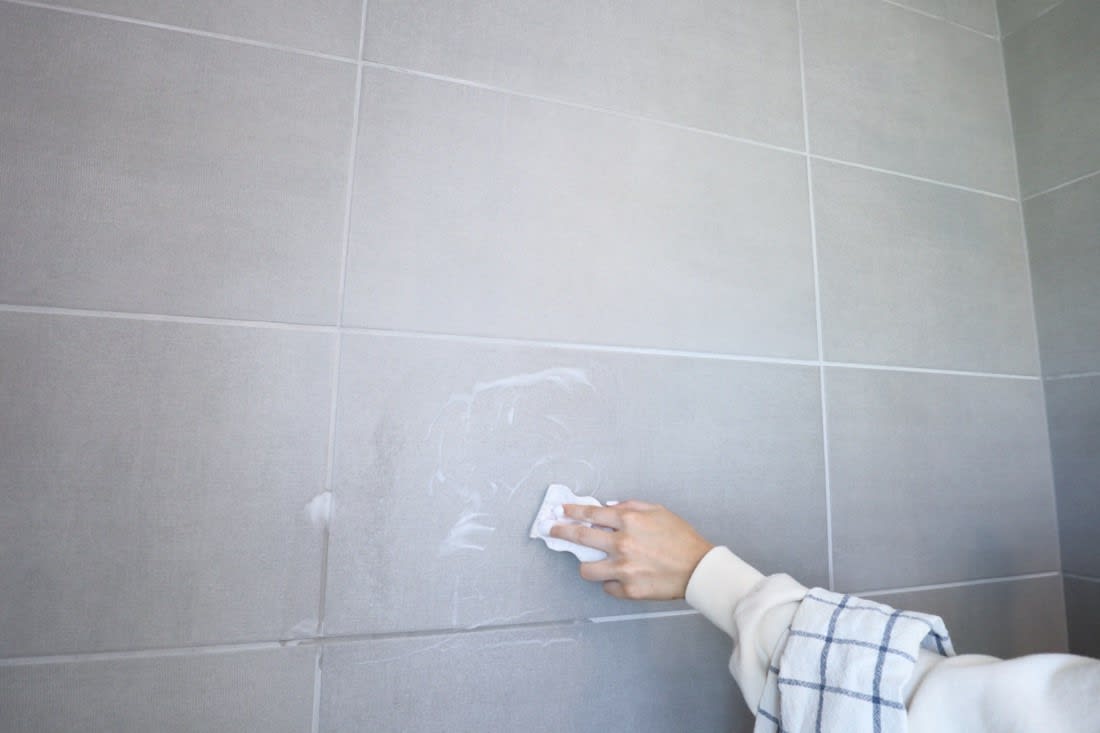How to Clean Different Types of Bathroom Tile: Ceramic, Porcelain, and Natural Stone
Bathrooms endure daily wear and exposure to moisture, making tile surfaces susceptible to grime, mold, and soap scum. Proper cleaning not only enhances the appearance of bathroom tiles but also extends their longevity. However, not all tile materials require the same approach. Ceramic, porcelain, and natural stone tiles each have unique characteristics that call for different cleaning techniques. Understanding the right methods ensures tiles remain in pristine condition without damage.
Cleaning Ceramic Tiles
 Ceramic tiles are among the most common bathroom surfaces due to their durability and affordability. They are relatively easy to maintain, but regular cleaning is necessary to prevent buildup of soap scum and mildew. Warm water mixed with a mild detergent is usually sufficient for everyday cleaning. A soft cloth or a non-abrasive sponge works best to wipe the tiles down.
Ceramic tiles are among the most common bathroom surfaces due to their durability and affordability. They are relatively easy to maintain, but regular cleaning is necessary to prevent buildup of soap scum and mildew. Warm water mixed with a mild detergent is usually sufficient for everyday cleaning. A soft cloth or a non-abrasive sponge works best to wipe the tiles down.
For deeper cleaning, a solution of equal parts white vinegar and water can help break down tough stains and soap residue. Vinegar’s natural acidity effectively dissolves grime while being safe for ceramic surfaces. After applying the solution, allowing it to sit for a few minutes before scrubbing helps loosen stubborn dirt. Rinsing with clean water ensures no residue remains.
Grout lines between ceramic tiles often accumulate dirt and mold, requiring special attention. A baking soda paste can be applied to grout lines and gently scrubbed with a toothbrush or a small brush. This method brightens the grout without causing damage. Regular maintenance prevents discoloration and mold buildup.
Cleaning Porcelain Tiles
Porcelain tiles share similarities with ceramic tiles but are denser and more resistant to moisture. Their low porosity makes them less prone to absorbing stains, yet they still require routine cleaning to maintain their shine. A gentle cleaner mixed with warm water is effective for daily maintenance. Using a microfiber mop or a soft sponge helps prevent scratches while lifting dirt.
For a deeper clean, a mixture of water and mild dish soap can be applied with a damp mop. Porcelain tiles with a polished finish require extra care to avoid streaks, so drying the surface with a soft towel prevents water spots. A diluted vinegar solution can also be used to remove tough stains, though it should never be used excessively as prolonged exposure may dull the finish.
Textured or matte-finished porcelain tiles often trap dirt in small crevices. A soft-bristle brush can help reach those areas without scratching the surface. If grout lines appear stained, a paste made from hydrogen peroxide and baking soda can effectively lift discoloration. Regular sealing of grout lines adds an extra layer of protection against stains and moisture.
Cleaning Natural Stone Tiles
Natural stone tiles, including marble, travertine, slate, and granite, offer a sophisticated look but require a more delicate approach to cleaning. Unlike ceramic and porcelain, these surfaces are porous and more susceptible to damage from acidic or harsh cleaners. Using the wrong products can lead to etching, discoloration, or permanent stains.
A pH-neutral stone cleaner or mild dish soap diluted in warm water is ideal for cleaning natural stone tiles. A soft mop or microfiber cloth helps lift dirt without scratching the surface. Avoiding vinegar, lemon juice, or bleach is crucial, as these substances can degrade the stone over time.
For stains, a paste made from baking soda and water can be applied to the affected area and covered with plastic wrap overnight. This method draws out the stain without harming the stone. Once the paste is removed, rinsing with clean water and drying the surface helps maintain its integrity.
Sealing natural stone tiles is an essential step in preserving their appearance. A high-quality sealant acts as a barrier against moisture and stains, reducing the risk of damage. Reapplying the sealant periodically ensures continued protection.

Preventative Maintenance for Long-Lasting Tiles
Keeping bathroom tiles clean requires more than just occasional deep cleaning. Regular upkeep prevents grime buildup and reduces the need for aggressive scrubbing. Using bath mats or rugs in high-moisture areas minimizes water exposure, while ensuring proper ventilation helps prevent mold growth.
Wiping down tiles after each shower reduces soap scum and mineral deposits. A squeegee or microfiber cloth can be used to dry surfaces quickly, preventing water spots and mildew. Choosing the right cleaning products based on the tile type ensures effective maintenance without causing harm.
Grout lines, often the most challenging part of tile cleaning, benefit from periodic resealing. A sealed grout surface resists moisture and stains, making cleaning easier over time. Addressing spills and stains promptly also prevents long-term discoloration.
Leave a Reply